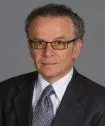Rapid Proliferation of EV Charging Stations on Commercial Properties Create Real Estate Questions
The rapid proliferation of EV charging stations on commercial properties – in apartment complexes, at offices, hotels and shopping centers, entertainment venues and recreational sites, public parking lots and even hospitals and other healthcare facilities, not to mention dedicated charging facilities roughly equivalent to fossil fuel service stations and charging units located at automotive dealers – give rise to a number of real property issues, some of which are not being well-addressed in the haste to push for rapid adoption of this relatively new and rapidly-evolving technology.
Both landowners eager to embrace charging stations to enhance the services offered at their properties, and the providers of charging stations, should carefully consider a number of issues before signing an agreement.
A Variety of Perspectives
There are several competing business models in the charging station space. Some property owners, particularly residential owners and small businesses, purchase charging stations from a manufacturer, and attempt to use and maintain those units to provide service to a small group of users (the "Self-Service Model"). For these smaller installations, usually relatively slow-charging L1 chargers that make use of existing standard residential or light commercial electricity services, or L2 chargers that require higher voltage capacity but can be installed with minimal effort, may be sufficient, at least for the next few years.
Where the volume of users is greater, for properties such as offices, hotels, shopping centers, entertainment venues, or parking lots, more rapid chargers may be desirable. The DC fast chargers not only require elevated electrical service to the property site (with attendant governmental and utility approval costs and timing, plus greater installation expenses), but also require significantly more ongoing maintenance. For these properties, landowners more frequently lease or license a portion of their property to permit an EV charging station provider to establish a charging site (the "Service Provider Model"). The Service Provider Model is more complicated, and raises a wider variety of potential issues than the Self-Service Model, from responsibility for obtaining necessary permits and utility services necessary for installation of the charging station, to ongoing maintenance of the charging station, and liability and insurance issues related to third-party users of the stations.
The Service Provider Model is more complex not only because it involves consideration of a variety of risks, but also because the various charging station providers ("Providers") have varying business strategies. Some Providers plan to make their money by selling charging equipment or consultative services related to equipment installation and/or maintenance services to property owners; others hope to create widespread networks accessible to users, placing a greater emphasis on convenience fees and other marketing to the end user via software applications that allow users to find publicly-available chargers. Thus, some Providers would prefer to control the charging station after installation, while others would prefer to walk away.
In addition, certain automotive manufacturers (OEM) and fossil fuel companies are offering alternatives to support their customers and to promote their brand, or to preserve the relevancy of their investments in EV vehicles or automotive service stations. The motivations of the Provider therefore greatly influence their approach to EV charging station installation and maintenance, further complicated by rapid growth and active partnerships and mergers in the Provider industry.
Sale, Lease or License?
As discussed above, some residential and smaller commercial property owners may opt for a "plug and play" approach to charging stations, using the Self Service Model. In those cases, the property owner must be sure to comply with local regulations and other requirements concerning installation of the selected charging station, and continuing maintenance of the charging station, but sale, lease or licensing of the property upon which the charging station is located is not a consideration. For larger commercial property owners, however, some variation of the Service Provider Model is more likely to be desirable, and property owners must consider whether to sell, lease or license the property upon which the charging stations will be located.
Outright sale of the land upon which the charging station will be located is feasible only when working with Providers interested in such an arrangement (and many Providers are not). Providers most interested in purchase of a property include some OEM, some oil and gas companies, and a few Providers interested in establishing free-standing service stations. Sale of a portion of an existing parcel of land can be troublesome, however, as division of existing land can be time-consuming. A sale of the land does have the virtue of making the Provider wholly responsible for the charging station, from installation to maintenance to liabilities related to use, but a sale of land usually cause the original landowner to have very little control over the new parcel, including the ability to assure that the new landowner provides the promised charging stations. As a practical matter, most shopping center, office, apartment or hotel owners are not going to find this option desirable.
Leasing a portion of property has several advantages for property owners and some Providers. Leasing generally provides a tenant with exclusive possession of a specific area of property, usually in exchange for payment of rent. Under most leases, the tenant is responsible for most utility and insurance charges associated with the use of the leased premises, and bears responsibility for keeping the leased premises safe for those who enter the leased premises. Due to the tenant's exclusive possession of the leased premises, the Provider usually would be responsible for maintenance and operation of the equipment located on the leased property. Therefore, leasing is advantageous for many landowners who do not want responsibility for installation, operation, and maintenance of the charging stations, but do want the benefits of the charging stations on their properties.
Licensing, in contrast, is a more limited right of use. Most licenses for use of property are revocable, and non-exclusive---that is, they have no set term, and the use of the land is typically shared with others. A fee may or may not be charged for the right of use. Under most licenses, the property owner retains the primary responsibility for the property and its safety, and therefore, the property owner most often pays for utilities and insurance, and would have at least some share of responsibility for liabilities arising out of the use of the licensed area.
Naturally, both leases and licenses can be negotiated to fit the parameters of a particular situation, but being aware of the differences, and structuring a transaction accordingly, will avoid trouble down the road.
Other Considerations
Utilities, as well as local, state, and federal governments, and even private companies are offering incentives to develop EV charging station infrastructure. These incentives can provide motivation for a particular deal structure.
No matter what deal structure is selected, it is wise to limit the deal term or allow for termination or mediation rights, given the rapidly-evolving technology in the charging station space. Property owners who are early adopters today will not want to tolerate outdated equipment in a year or two, and Providers (or at least some of them) will want rights to change their network configuration or update equipment.
All of the foregoing issues (and more) should be addressed in a thoughtful, well-negotiated process between the property owner and Provider. Not every Provider will be a good fit for every property owner, and vice versa.
The UFLPA Goes Front and Center in Automotive Supply Chains
As we wrote in our publication in March 2023, the United States Customs & Border Patrol's (CBP) expansive powers under the recently enacted Uyghur Forced Labor Prevention Act (UFLPA) were about to lay siege on automotive imports from China. Particularly concerning for U.S. automakers was the fragile supply chains that support the nascent EV industry in North America, as OEMs were again thrust into the political center ring that is U.S/China relations, just as they were in 2019 when the prior administration rolled out the 301 Trade tariffs. The only difference this time is that the "forced labor agenda" has bipartisan support. The Democrats rallying around labor and human rights and the Republicans on anything involving China, national security, and yes, even their hesitation to electrify the U.S. in a massive way. Over the last six months, we have learned a great deal about the CBP's ability to keep up and administer its powers under the UFLPA, as well as how the UFLPA could derail the EV transition, as suppliers and OEMs are faced with managing the risk of detentions of parts or even the stigma of sourcing from Chinese suppliers on the Entity List.
The UFLPA, signed into law in June 2022, took on greater meaning for the U.S. automotive industry earlier this year when the Forced Labor Enforcement Task Force (FLETF), the U.S. government inter-agency group responsible for designing the enforcement strategy for the UFLPA, confirmed that CBP would be enforcing the UFLPA beyond the "high-priority sectors" named in the law or in the Enforcement Strategy (i.e., cotton, polysilicon, and tomatoes).
The UFLPA creates a rebuttable presumption that goods mined, produced, or manufactured wholly or in part in Xinjiang or by an entity on the UFLPA Entity List are prohibited from U.S. importation under 19 U.S.C. § 1307. This means that the CBP and the Centers of Expertise and Excellence, who are tasked with enforcing the UFLPA at the border as goods arrive in the U.S. can draw a presumption that certain Chinese goods were either manufactured with forced labor from Xinjiang or the supply chain for the finished goods relied on forced labor from this Province in China. This presumption can be rebutted by the importer of records, but only after it provides clear and convincing evidence that the goods were not dependent on forced labor from Xinjiang Province.
But, what led to this interest in the Chinese auto industry as the next frontier for examining allegations of forced labor? For nearly two decades, Chinese automotive suppliers have been supplying OEMs and tier one and two suppliers in North America with quality and low cost options. And, U.S. OEMs and upper tier suppliers have been gladly receiving these automotive parts from an ever more sophisticated automotive supply chain, especially an EV supply chain that currently is more developed than those in Europe or North America. The UFLPA, like the 301 tariffs before it, however, has given another reason for OEMs and suppliers in the U.S. to evaluate their Chinese supply base. But, is this concern enough to avoid the realities that lithium batteries and related components are largely sourced from China, regardless of the battery supplier's country of origins.
Anyone familiar with the Chinese automotive supply chain realizes that most components are manufactured thousands of miles from the Xinjiang Uyghur Autonomous Region (XUAR), where attention on the UFLPA has focused – the XUAR is still a remote and largely undeveloped area on the western edges of the P.R.C. populated by ethnic minority groups, such as Uyghurs, Kazakhs, and Kyrgyzs. It is a region not known for its connection to automotive suppliers, especially those exporting products to the U.S. The XUAR, however, has become front and center in the battle for EV independence, but why?
It is likely not a coincidence that it may have something to do with researchers in the UK, who have published several reports directed at the U.S. automobile supply chain, tapping into their past reporting on human rights issues in XUAR. In December 2022, Sheffield Hallam University, located in the United Kingdom, published, "Driving Force – Automotive Supply Chains and Forced Labor in the Uyghur Region." While Sheffield had been reporting on the situation in XUAR for years, it was not until December 2022, that Sheffield decided to focus on the Chinese automotive industry. In its report in December, the researchers declared: "The world's largest steel and aluminum producers have shifted into the Uyghur Region under Chinese government subsidies and incentives. But tires, interiors, windshields, batteries and practically every other major part are also implicated. The auto industry cannot wait another day to trace their supply chains back to the raw materials. To do anything short of full tracing would be an enormous legal, ethical, and reputational risk." https://www.shu.ac.uk/helena-kennedy-centre-international-justice/research-and-projects/all-projects/driving-force
Sheffield University followed up its December publication in May 2023 with, "Products Made with Forced Labor in the Uyghur Region." In this edition, Sheffield claimed:
The automotive parts manufacturing market is expected to reach nearly US $2 trillion by 2026. China is one of the world's top auto parts suppliers, exporting upwards of US $45 billion worth in 2021. The United States automotive industry is particularly reliant on Chinese parts, receiving approximately a quarter (US $11.5 billion worth) in 2021. The manufacture of automotive parts is significantly exposed to forced labor with raw material inputs including aluminum, steel, and copper, whose connections to forced labor have been described in previous sections. There has also been an increase in production of other automotive component parts in the XUAR such as batteries (described above), electronics, car interiors, glass, and tires and wheels. Similar to other industries that have undergone rapid expansion, the PRC government has dedicated significant resources to moving the highly polluting and energy-intensive processing of these raw materials into the Uyghur Region." https://www.shu.ac.uk/helena-kennedy-centre-international-justice/research-and-projects/all-projects/evidence-briefs
By May 2023, CBPs ramped up efforts directed at the automotive industry was in full swing, and for all intents and purposes, seemed to be fueled by the reporting of Sheffield University. And, CBP was not alone in its reliance on Sheffield's reporting. In December 2022, Senate Finance Chairman Ron Wyden (R-Oregon) questioned eight major automakers over reports that their supply chains may include materials sourced from the Xinjiang region of China. Sheffield's December 2022 report was cited in the Senator's letter. https://www.finance.senate.gov/chairmans-news/senate-finance-committee-chair-wyden-expands-investigation-of-auto-supply-chain-links-to-forced-labor-in-xinjiang-china. Senator Wyden then followed up in March 2023, sending a second letter to automakers and tier 1 suppliers, requesting information about how these companies sourced materials and oversaw their supply chains. Sheffield's December 2022 report was again cited in the Senator's letter. https://www.finance.senate.gov/chairmans-news/senate-finance-committee-chair-wyden-expands-investigation-of-auto-supply-chain-links-to-forced-labor-in-xinjiang-china.
As reported by Axios in February of this year, Wyden is not the only member of Congress who has questioned the U.S.'s reliance on China. https://www.axios.com/2023/02/06/congress-ev-china-oversight-incoming. And, Senator Wyden is not the only member of Congress who has relied on Sheffield's reporting to support the concerns. In fact, Sheffield's reports have seemingly gained significant importance in supporting the U.S.'s policy towards China over forced labor issues and secure supply chains. And, while CBP and FLETF do not openly admit to relying on Sheffield's reporting, there are plenty of anecdotic reasons to believe the reporting is currently influencing decisions at the border.
For now, the trend towards ramping up concerns and legislative actions over forced labor in China does not appear to be waning in the U.S., but as Beijing continues to deny these allegations, the question for the industry continues to be unsettled: How will this impact the U.S.'s initiative to electrify? Time will tell.
Mark V. Heusel | Member Partner
The content of this article is intended to provide a general guide to the subject matter. Specialist advice should be sought about your specific circumstances.



